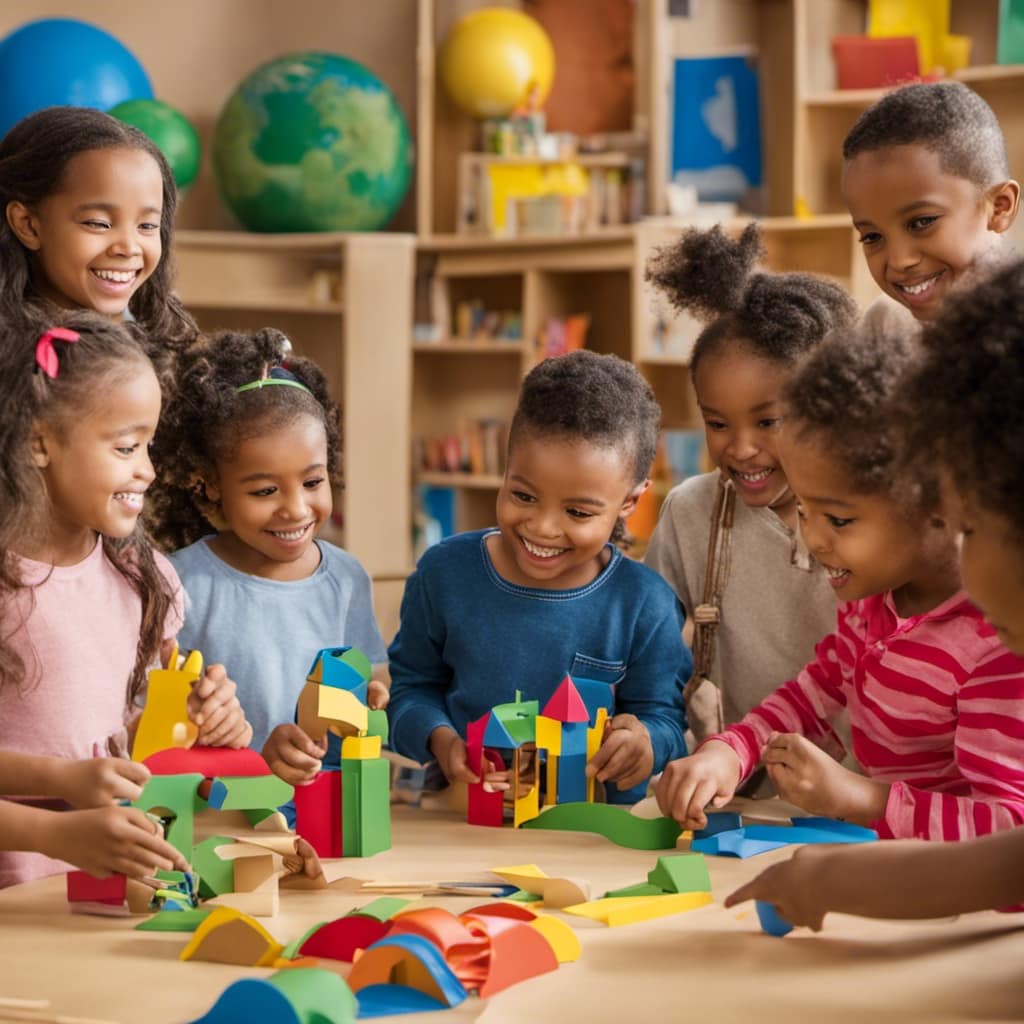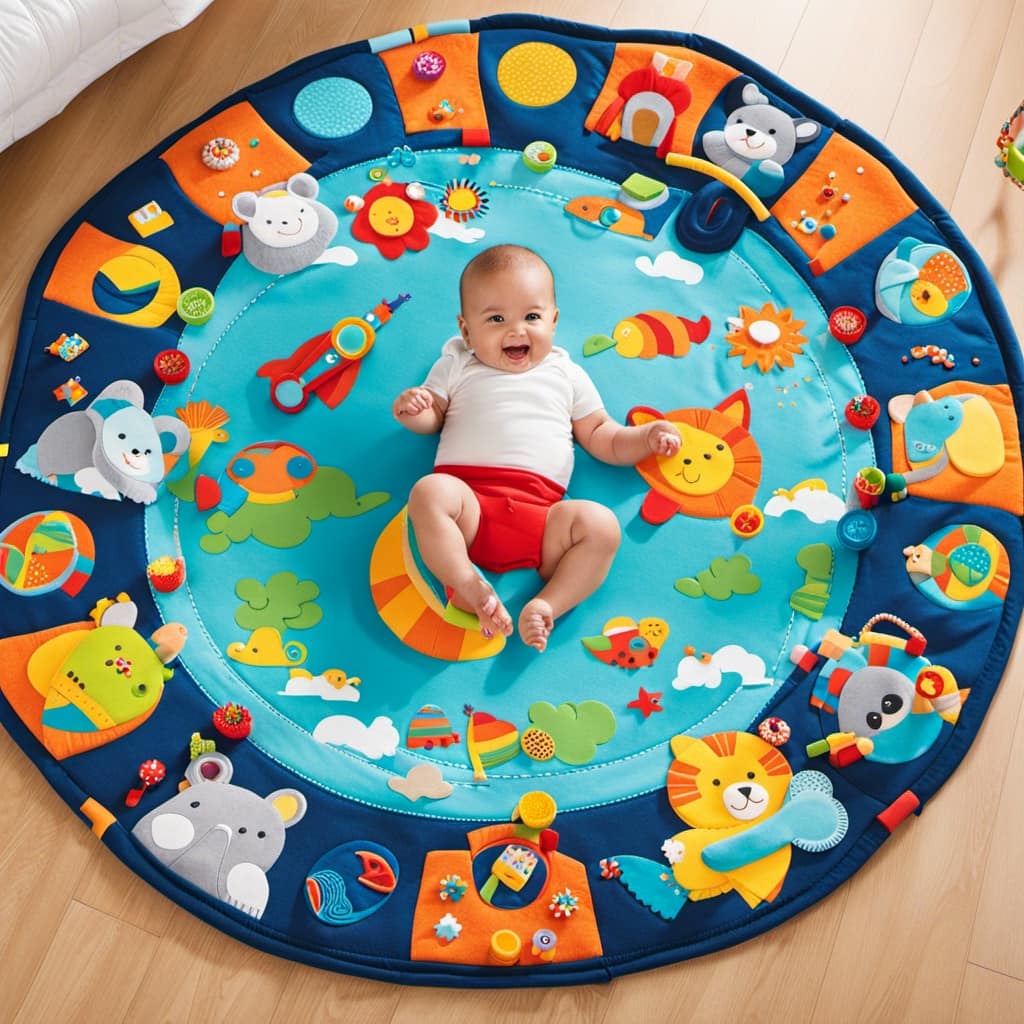As a parent, I understand the significant impact that fine motor skills have on my child’s growth and development. These skills involve the coordination of hand and finger muscles and are essential for activities such as writing, drawing, and buttoning clothes. They are key to cognitive development, helping to improve problem-solving skills and sensory processing.
By engaging in activities like finger painting and puzzles, children can develop independence and creativity. In this article, we will explore the importance of fine motor skills in child development and how they positively influence academic success, daily life activities, and overall growth.
Key Takeaways
- Fine motor skills are essential for future academic and daily life activities
- Finger strength and hand-eye coordination are key components of fine motor skills
- Fine motor skills promote independence and participation in activities
- Fine motor skills contribute to cognitive development and sensory integration
Understanding the Role of Fine Motor Skills in Child Development
I understand the importance of fine motor skills in child development and how they play a crucial role in various aspects of a child’s growth.
Fine motor skills have a significant impact on social interaction and sensory integration. When children develop their fine motor skills, they are better able to participate in activities with their peers, such as playing games or building structures together.
Fine motor skills also enable children to engage in activities that require precise hand movements, such as drawing or writing, which can enhance their ability to communicate and express themselves.
Additionally, fine motor skills play an important role in sensory integration, allowing children to process and respond to sensory information from their environment.

Overall, the development of fine motor skills is essential for a child’s social interaction and sensory integration.
The Link Between Fine Motor Skills and Academic Success
Developing strong fine motor skills positively impacts academic success by enhancing hand control and precision in tasks such as writing and drawing. The impact of fine motor skills on academic achievement is significant, and there are strategies to improve these skills in the classroom.
- Implement activities that target finger strength and dexterity, such as using clothespins or squeezing stress balls.
- Encourage students to practice handwriting regularly to improve their hand control and letter formation.
- Provide opportunities for students to engage in activities that promote hand-eye coordination, such as threading beads or playing with building blocks.
- Incorporate technology tools, like touchscreens or tablets, that require precise finger movements to navigate and interact with educational apps.
- Integrate arts and crafts activities that involve cutting, drawing, and manipulating small objects to enhance fine motor skills.
The Impact of Fine Motor Skills on Daily Life Activities
Improving hand control and precision in everyday tasks like writing, drawing, and buttoning clothes is crucial for performing daily life activities with ease. Fine motor skills have a significant impact on handwriting, as they involve the coordination of hand muscles and finger movements. When fine motor skills are well-developed, individuals can achieve precise and controlled handwriting.
Additionally, fine motor skills play an important role in sensory integration, which is the ability to process and interpret sensory information from the environment. Sensory integration is closely linked to fine motor skills, as it involves the integration of sensory information with motor responses. By enhancing fine motor skills, individuals can improve their ability to process sensory information and respond appropriately, ultimately leading to improved performance in daily life activities.
Examining the Connection Between Finger Strength and Hand-eye Coordination
Enhancing finger strength and hand-eye coordination allows for more precise and controlled movements in daily tasks and activities.
-
Finger strength is crucial for developing handwriting proficiency. A strong grip enables better control of writing tools, leading to neater and more legible handwriting.

-
Hand-eye coordination helps in guiding the movements of the hand while writing. Children with better hand-eye coordination are more likely to produce accurate letter formations and maintain proper spacing on the page.
-
Fine motor skills, including finger strength and hand-eye coordination, also impact social development. Studies have shown that children with well-developed fine motor skills tend to have better social interactions.
They are more likely to engage in cooperative play, successfully manipulate objects during play, and participate in activities that require precise hand movements, such as drawing or building.
How Fine Motor Skills Foster Independence and Participation
I have noticed that fine motor skills enable me to become more independent and actively participate in various tasks and activities. These skills play a crucial role in my daily routines and social interactions. For example, being able to button my clothes or tie my shoelaces allows me to dress myself confidently, without relying on others. Additionally, when I can hold and manipulate objects with precision, I can engage in activities like painting, drawing, or playing musical instruments, which foster creativity and self-expression. Fine motor skills also contribute to my social interactions, as they enable me to engage in activities with my peers, such as building blocks or playing board games, promoting teamwork and cooperation. Overall, developing and improving fine motor skills greatly enhance my independence and active participation in various aspects of my life.
| Fine Motor Skills and Social Interaction | Fine Motor Skills in Daily Routines |
|---|---|
| – Enable engagement in activities with peers | – Dressing oneself independently |
| – Promote teamwork and cooperation | – Holding and manipulating objects |
| – Foster creativity and self-expression | – Engaging in artistic activities |
| – Support independence and active participation | – Completing everyday tasks with ease |
Tracking Developmental Milestones for Fine Motor Skills
In my previous section, I discussed how fine motor skills foster independence and participation in everyday activities.
Now, let’s shift our focus to the importance of tracking developmental milestones for fine motor skills and their role in sensory integration.

-
Tracking fine motor milestones: It’s crucial to monitor a child’s progress in fine motor development. This helps identify any delays or areas that may require additional support or intervention.
-
Role of fine motor skills in sensory integration: Fine motor skills and sensory integration go hand in hand. Sensory integration refers to the brain’s ability to process and organize sensory information. Fine motor skills contribute to this process by enhancing the brain’s ability to integrate sensory input and produce coordinated motor responses.
Understanding and tracking fine motor milestones and recognizing their role in sensory integration can help promote optimal development and provide appropriate interventions when needed.
Exploring the Different Types of Fine Motor Skills
Developing finger dexterity through activities like playing musical instruments and typing can significantly improve fine motor control. Fine motor skills in early childhood are crucial for a child’s overall growth and development. They allow for precise tasks such as writing, drawing, and buttoning clothes. As children enter adolescence, fine motor skill development continues to play an important role. Strong finger dexterity and hand-eye coordination support cognitive and social development. Improving finger dexterity enhances overall hand control and precision. Activities like playing musical instruments and typing are effective in improving finger dexterity. In early childhood, activities like finger painting, threading beads, and using playdough can support fine motor skill development. As children grow older, engaging in activities that require precise hand movements, such as cutting and drawing, can further promote fine motor skills.
| Fine Motor Skills in Early Childhood | Fine Motor Skill Development in Adolescence |
|---|---|
| Precise tasks like writing and drawing | Improved hand control and precision |
| Buttoning clothes | Enhanced finger dexterity and hand-eye coordination |
| Object manipulation and coordinated hand movements | Cognitive and social development support |
| Feeding with a spoon and stacking blocks | Overall hand control and manipulation skills |
| Turning pages, drawing simple lines, building towers | Improved hand-eye coordination and problem-solving skills |
| Puzzles, stringing beads, using playdough | Creative expression and self-regulation |
Engaging Activities for Developing Fine Motor Skills
Engaging activities like finger painting, threading beads, and using playdough support the development of fine motor skills. These activities provide numerous benefits for children’s overall growth and development.
- Finger painting promotes creativity, hand-eye coordination, and fine motor control.
- Threading beads enhances hand strength, precision, and manipulative skills.
- Playdough and sculpting strengthen hand muscles and improve dexterity.
- Puzzles and building toys enhance problem-solving and hand-eye coordination.
- Cutting and drawing activities promote hand control and precision.
By engaging in these activities, children not only improve their fine motor skills but also develop important cognitive, social, and emotional skills. Fine motor skill development plays a crucial role in sensory integration and helps make important brain connections. These skills also foster creativity, self-expression, and self-regulation.

The Surprising Influence of Fine Motor Skills on Cognitive Development
In the previous subtopic, we discussed engaging activities that can help develop fine motor skills in children. Now, let’s explore the surprising influence of fine motor skills on cognitive development.
It is well-known that fine motor skills contribute to cognitive development, but their impact on other aspects, such as sensory integration, is often overlooked. Fine motor skills play a crucial role in sensory integration, which is the brain’s ability to process and interpret sensory information from the environment.
To better understand the connection between fine motor skills and cognitive development, let’s take a look at the surprising benefits of fine motor skills in problem-solving.
| Fine Motor Skills | Problem Solving |
|---|---|
| Hand-eye coordination | Enhances spatial awareness and visual-motor integration. |
| Finger dexterity | Supports manipulation and precise control of objects. |
| Finger isolation | Enables the ability to manipulate multiple objects simultaneously. |
| Hand strength | Facilitates the effective use of tools and materials. |
As we can see, developing fine motor skills can improve problem-solving abilities by enhancing spatial awareness, manipulation skills, multitasking, and tool usage. These skills are essential for tasks that require critical thinking and problem-solving, both in academic and daily life activities. By nurturing fine motor skills, we can help children develop not only their physical abilities but also their cognitive skills, leading to overall growth and success.
Enhancing Creativity and Self-Expression Through Fine Motor Skills
I can enhance my creativity and self-expression through activities that promote fine motor skills. Developing artistic abilities is not only about talent but also about the ability to manipulate and control artistic tools effectively. Improving fine motor skills in older children is crucial for their artistic development. Here are some activities that can help:
-
Painting: Using a paintbrush requires precise hand movements and control, allowing for self-expression through color and brushstrokes.

-
Sculpting: Working with clay or other sculpting materials strengthens hand muscles and promotes creativity in creating three-dimensional art.
-
Collage: Cutting and arranging different materials like paper, fabric, and photographs requires fine motor skills and allows for artistic exploration.
-
Calligraphy: Practicing calligraphy improves hand control and precision in lettering, creating visually appealing written art.
-
Jewelry making: Stringing beads and manipulating small pieces requires fine motor skills and allows for artistic expression through wearable art.
Engaging in these activities not only enhances fine motor skills but also fosters artistic abilities and self-expression.
The Role of Fine Motor Skills in Emotional Expression and Self-regulation
In the previous subtopic, we discussed how fine motor skills enhance creativity and self-expression. Now, let’s explore the role of fine motor skills in emotional expression and self-regulation.

Fine motor skills play a crucial role in a child’s ability to express and regulate their emotions. When children have well-developed fine motor skills, they can engage in activities that promote self-expression, such as drawing or painting. These activities allow children to visually represent their emotions, helping them to understand and communicate their feelings.
Furthermore, fine motor skills are closely linked to sensory integration. Sensory integration refers to the brain’s ability to process and interpret sensory information from the environment. When children have strong fine motor skills, they are better able to integrate sensory information, which positively impacts their social interaction and overall development.
Overall, the development of fine motor skills has a significant impact on a child’s emotional expression, self-regulation, and their ability to engage in social interactions.
Frequently Asked Questions
How Do Fine Motor Skills Contribute to Sensory Integration?
Fine motor skills contribute to sensory integration by improving hand-eye coordination and spatial awareness. These skills allow for precise movements needed to explore and interact with the environment, enhancing the child’s overall sensory processing abilities.
What Are Some Activities That Can Improve Finger Dexterity?
Finger painting and playdough molding are great activities to improve finger dexterity. These activities engage the hand muscles and promote precision and control, just like a sculptor shaping clay.
How Do Fine Motor Skills Impact Problem-Solving Abilities?
Fine motor skills impact critical thinking abilities by improving hand-eye coordination and problem-solving skills. Developing these skills enhances precision and control, allowing for intricate tasks. Fine motor skills development can enhance problem-solving skills through cognitive development.

Can Fine Motor Skills Development Improve Emotional Expression and Self-Regulation?
Can improving fine motor skills enhance emotional expression and self-regulation? Developing these skills supports cognitive development and fosters emotional intelligence, allowing for better control and communication of emotions.
Are There Any Long-Term Benefits of Developing Fine Motor Skills in Early Childhood?
Yes, developing fine motor skills in early childhood has long-term cognitive benefits. Studies show that improved fine motor skills are associated with better academic achievement and cognitive abilities later in life.
Conclusion
In conclusion, fine motor skills are crucial for a child’s overall development. They play a significant role in cognitive, emotional, and sensory development.
Engaging in activities that promote the development of these skills fosters problem-solving abilities, creativity, and self-expression. Fine motor skills also contribute to academic success and enhance daily life activities.
By developing finger strength and hand-eye coordination, children can gain independence and actively participate in various tasks. Just like a beautiful melody flowing effortlessly, fine motor skills bring joy and harmony to a child’s growth and development.










